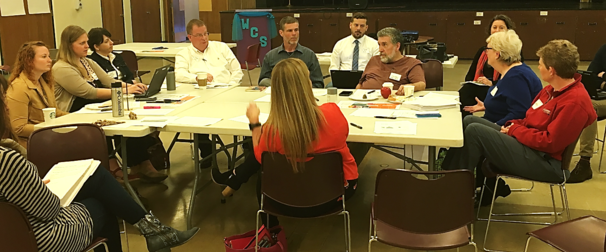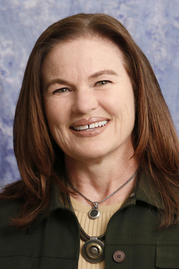|
In a message to staff Monday, OHA Director Patrick Allen
shared a proposal for a new organizational structure. The goals of the
reorganization are to:
-
Consolidate Medicaid:
Align Medicaid policy and operations into a single program under the Medicaid
director.
-
Consolidate behavioral
health: Unite mental health, substance use and gambling services across the
agency within a single program, under a new behavioral health director.
-
Strengthen
relationships with OHP members and stakeholders: Expand the ombuds program
that helps OHP members solve access to care problems and align innovator agents
who work with coordinated care organizations under OHA’s chief of staff.
The changes are intended to “improve
our business rigor and strengthen transparency and accountability in our
agency,” said Director Allen. You can see the proposed organizational charts here.
Director Allen is seeking stakeholder input on
the proposal. He presented an overview of the proposed reorganization to the
Oregon Health Policy Board at the board’s May 1 meeting. He’ll bring a final
proposal for OHPB’s approval in June. The new OHA structure will take effect on
July 1.

 Advocates make
suggestions to improve behavioral health services at a public meeting in The
Dalles.
In its first
round of CCO 2.0 public meetings, the Oregon Health Authority is hearing a lot
of ideas about how to improve the delivery of addiction medicine and mental
health services.
“You would never tell a cancer patient who is
at Stage 3 to come back at Stage 4, yet we do this with people who need
addiction and mental health services,” said Debby Jones, who attended the April
21 public meeting in The Dalles. Jones runs a Wasco County substance abuse
prevention program.
OHA is
hosting the public meetings to gather input on the second phase of coordinated
care in Oregon. The first phase started in 2012 when coordinated care
organizations signed their first contract with the state to provide health care
for nearly 1 million Oregonians on the Oregon Health Plan.
CCOs receive
a monthly payment from the state to coordinate physical, behavioral and dental
health services for their members. The next contract will start in 2020, and
the suggestions gathered at these public meetings will help to inform that
contract.
Attend a CCO 2.0 public meeting
The final session in the spring round of public meetings will be held in Medford Friday, May 11, 10 a.m. to noon at the Rogue Community College / Southern Oregon University Medford Campus Higher
Education Center, 101 S. Bartlett.
A second
round of public meetings will be held in late June.
Learn more
about how you can attend a public meeting, or give your feedback at the CCO 2.0 website.
 |

On April 21 Governor Kate Brown signed legislation that will
establish the Cleaner Air Oregon program. Cleaner Air Oregon will reduce the
risks industrial air toxics pose to people in Oregon. It will require
industries to report their use of potentially harmful air pollutants, evaluate
whether their emissions pose risks to neighbors and regulate companies whose emissions
exceed risk action levels.
The next step is to finalize Cleaner Air
Oregon rules. A Rules Advisory Committee will meet May 8-9 in Portland to
continue reviewing draft rules to launch Cleaner Air Oregon. The committee's
role is to provide state regulators and health experts advice on regulations to
implement the program.
The committee will discuss updates to the proposed
rules, which were released for public comment last fall. New changes to the
rules incorporate the new Cleaner Air Oregon legislation, public comment and
technical improvements. The rules advisory committee meetings are open to the
public. You can find out how to attend or listen online at the Cleaner Air Oregon website.
|

Can Oregon's public health and health care
systems work together to achieve shared goals?
A new Oregon Health Authority report sets a
baseline for metrics that track the state's progress toward improving
population health, and many of those metrics align with coordinated care
organization (CCO) incentive metrics in Oregon’s Medicaid coordinated care
system.
The 2018 Public Health
Accountability Metrics Baseline Report examines key health issues such as improving
childhood immunization rates, reducing tobacco use and opioid overdose deaths,
and ensuring access to clean drinking water.
Oregon's Public Health Advisory Board, which
advises OHA on policy matters related to public health programs, established
the measures in June 2017 as a way of tracking progress toward population
health goals as part of the modernization of Oregon’s public health system. The
metrics also will help identify where changes are needed if goals aren’t being
met.
Key findings from the report include:
- With 89 percent of public water systems meeting
health-based standards, the public health system is close to meeting the
statewide benchmark of 92 percent.
- Rates of gonorrhea infections are considerably
higher than the statewide benchmark. Oregon’s public health system is using
some of the Legislature’s $5 million investment in public health modernization
to establish regional systems to control communicable diseases including
gonorrhea.
- For most accountability metrics, health outcomes
vary across racial and ethnic groups. Understanding where health disparities
exist will allow state and local public health authorities to focus
interventions on reducing disparities.
Annual metrics reports will tell the public
health system and its partners and stakeholders where Oregon is making progress
toward population health goals, and where we need new approaches and additional
focus.
The full report is available on the Public Health Accountability Metrics webpage.


The Oregon Health Authority has seen some leadership
changes in recent weeks. Dolores "Dolly" Matteucci assumed her duties
as Superintendent of Oregon State Hospital, and OHA Director Patrick Allen has
made two changes to the OHA leadership team. Kristine Kautz is now deputy
director and Dawn Jagger is chief of staff.
Before joining the state hospital, Matteucci served
for eight years as the executive director of Napa State Hospital in California.
She has served in a variety of administrative and managerial positions at Napa
and other California facilities. She has worked at all levels of a state
hospital facility, beginning her career as a clinical dietician at Napa in
1987.
“I am confident that Dolly Matteucci brings the right
mix of compassion and expertise to continue the tremendous success Oregon State
Hospital has had transforming itself during the last eight years,” Allen said.
|

Kris Kautz came to OHA
from the Oregon
Department of Revenue, where she served as deputy director. She is a long-time
senior executive in state government, having worked at five state agencies prior
to OHA, including the Department of Administrative Services.
“As deputy director, Kris will represent the agency in
inter-agency processes, planning, and discussions,” Pat says. “In addition, she
will continue to oversee the functions and operations she has been responsible
for as chief operating officer. In her short time at OHA, Kris has proven that
she has the skills and expertise we need in this role.”
Dawn Jagger had served as interim External Relations
Divisions director at OHA since September.
|

“Dawn's leadership has been integral to our efforts to
rebuild trust with legislators and health system partners,” Pat says. “As chief
of staff, she’ll continue to foster greater transparency, align work across OHA
to advance our health transformation goals, and provide strategic counsel to me
and the OHA leadership team. In addition, she will continue to lead the
external relations teams.”
Jagger came to OHA from the Oregon Department of
Consumer and Business Services (DCBS), where she was senior
health policy and communications adviser. She
previously worked as a federal policy liaison for the Oregon Health Insurance
Marketplace, an enforcement officer in the Insurance Division at DCBS, and was a
judicial law clerk for Lane County Circuit Court Judge Karsten H. Rasmussen.
|
|